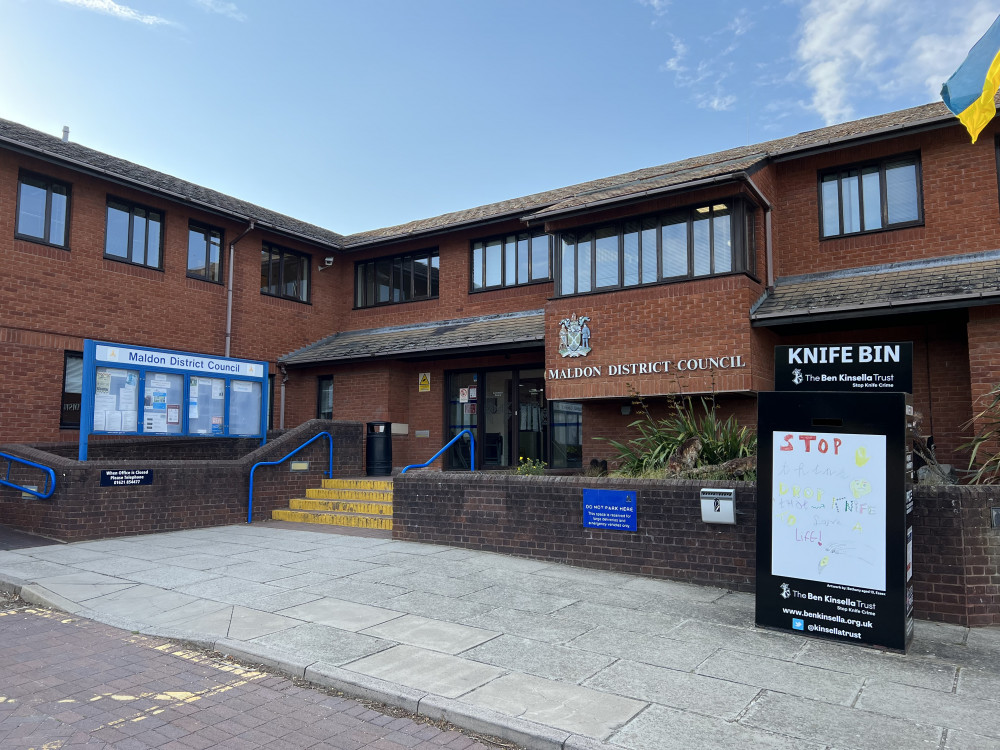Essex devolution and local government reorganisation explainer
By Piers Meyler - Local Democracy Reporter 12th Feb 2025
By Piers Meyler - Local Democracy Reporter 12th Feb 2025

Living in Essex could be significantly different over the next few years as major changes are brought in to your key local services, such as when and how often your bins are collected and who fixes potholes in your road amid a once-in-a-generation plan to get rid of Essex's local councils.
The Government is working to establish new, larger unitary councils in Essex—possibly five in total, each with around 400,000 residents—to replace the 15 councils currently looking after local services in your area.
These new unitary councils will run everything for residents, from bin collections and road maintenance to homelessness and child social care.
Essex is also set to get a mayor in charge of a combined authority with its own responsibilities.
This means that every council service will be switched to organisations that don't yet exist.
There has already been an outcry amid the decision to cancel county council elections scheduled in 2025 – at request from Essex County Council – to help usher in the changes.
It means the May elections for seats on Essex County Council won't go ahead, and councillors currently elected may still be there in 2028—an extra three years without facing a vote.
The government and the Essex County Council Tory leadership, backed by Labour councillors, argued that it would be best to avoid having elections for one year to ensure efficient and timely local government reorganisation.
However, it means county councillors will be left in post way past the date that many may have lost their seat.
Unitary local authorities would replace multiple local authorities with a single local government in a given area.
Essex County Council runs public services such as education, libraries, roads, and social care, while second-tier district, borough, and city councils are responsible for matters such as waste collection, environment, and housing. The unitary authorities of Southend and Thurrock will also disappear as they merge with districts to form even larger unitaries.
Waste
The new unitary authority will collect and dispose of waste and clean the streets.
Currently, district councils collect waste and clean streets, but the changes could mean that each of the unitary authorities will collect up to 400,000 residents' waste.
There may also be changes to the day of the week each household's waste is collected and the frequency at which it is collected.
These new councils will also be responsible for waste disposal, which Essex County Council currently undertakes.
Essex County Council has committed to sending all its non-recyclable waste to incineration in a £1 billion deal with waste company Indaver, which is building a new facility at a former airbase in Rivenhall, near Witham.
Municipal recycling centres, currently run by Essex County Council, are also likely to be switched over.
Highways and transport
Each unitary authority will likely be responsible for the roads maintained by either Essex County Council, Thurrock or Southend councils.
Essex County Council looks after over 5,000 miles of roads, 4,000 miles of pedestrian footpaths and cycleways, and another 4,000 miles of public rights of way.
Park and ride services are currently run by Essex County Council and are also set to change when the council is closed down.
Libraries
Essex County Council is the second largest library authority in England, serving a population of nearly 1.5 million residents across a network of 74 libraries, two mobile library vehicles, an online e-library service, and a home library delivery service provided by volunteers.
This service will also likely be split among the five unitaries.
Housing
Housing has been a significant issue for Essex's district councils, with services ranging from providing social housing and supporting homeless people to building new homes in the area.
The pressure districts feel will have to be picked up by larger unitary authorities.
Chelmsford City Council says a key pressure highlighted in its budget report is its rapidly growing spending on homelessness, mainly on temporary accommodation.
The council allocated £5.9 million for housing services in 2025/26, almost a fifth (19.7 per cent) of its net spending.
In 2020/21, the council's net spending on housing was just £1.365 million, or 7.2 per cent of its budget.
Environment Health, food hygiene and health and safety
District, borough and city councils are also responsible for environmental health, including air quality, water quality, food safety, and other factors affecting people's health and well-being.
They are also responsible for inspecting local restaurants and takeaways as part of the food hygiene rating scheme and ensuring safe workplaces.
Many district councils also manage leisure centres, which include swimming pools, gyms, and sports facilities.
Planning
Planning is currently dealt with by borough councils, which have the power to approve or refuse applications. Each borough or district council has a planning committee, which decides and discusses planning applications at public meetings. Sometimes, planning decisions are passed onto officers instead of going to the council's committee.
Essex County Council also consults on various types of plans and has powers over plans relating to waste sites, roads, and schools. All these powers will be transferred to the new unitary councils, with some going to the new mayor-led combined authority.
Education
Essex County Council runs education, schools, and social care for children and adults. It has a range of powers, including ensuring there are enough school places for children in need, providing education for children who are excluded from school, allocating funding for schools, and providing support with meals, shopping, home adaptations, and equipment to help people stay independent.
These responsibilities will be transferred to the new unitary authorities, with some powers transferred to the new combined authority.
Parking
A mixture of second-tier councils and private companies currently manages car parking. The council can issue fines and manage some car parks. Under the new system, the responsibilities will be passed to the new unitary councils, and some powers may go to the new combined authority, too.
Licensing is handled very much like planning. The borough or district council decides on applications, including new businesses and animal licenses.
The borough councils have licensing committees that can approve or refuse applications. These powers will be moved to the new unitary councils.
Combined authority and an Essex mayor
Alongside restructuring plans, Essex County Council, Southend City Council, and Thurrock Council are also working towards devolution and creating a new single body, known as a strategic authority, for Essex. It would initially take the form of a combined county authority, possibly led by an elected mayor scheduled to be in place in May 2026.
The strategic authority's key functions would include strategic transport functions, such as supporting buses, trains, concessionary fares, skills, and driving economic growth.
It is also anticipated that the mayor will ultimately take on the current role of Police, Fire and Crime Commissioner for Essex.
Leader of Essex County Council, Councillor Kevin Bentley, said: "I am thrilled that our hard work to bring devolution to Essex has paid off, and we are a step closer to seeing real positive change in our county.
"We welcome the government's acceptance of our request and eagerly await the next steps.
"I truly believe devolution is the best choice for our county's future. It is the biggest chance we will get to rethink our system and bring more power into the hands of local people. This will mean more opportunities for our residents and businesses that will help them and our whole county flourish.
"With regard to Local Government Reorganisation, we will commit to work together with all councils in Essex to ensure that it delivers the best outcome for our residents and businesses too."
CHECK OUT OUR Jobs Section HERE!
maldon vacancies updated hourly!
Click here to see more: maldon jobs
Share:



